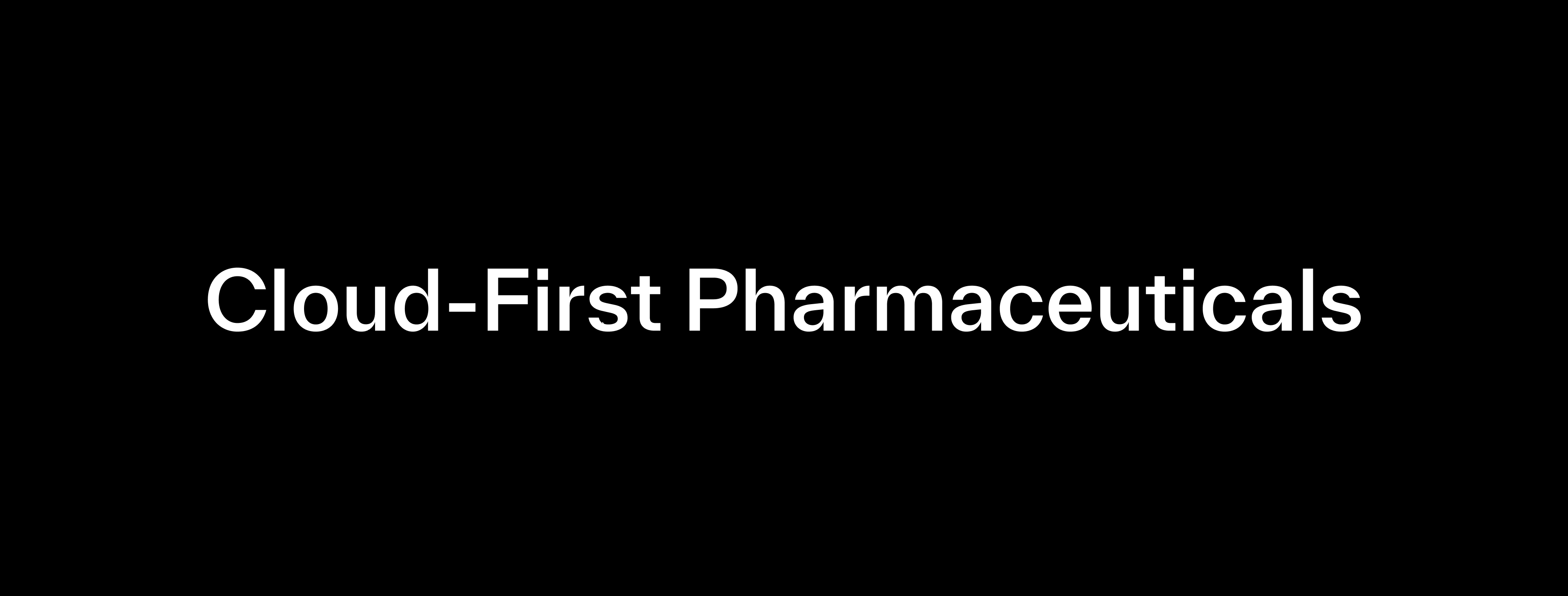Cloud-First Pharmaceuticals

Innovation at the Edge
When David Smoley joined AstraZeneca as CIO in April 2013, he brought a hunger for change and a deep understanding of technology’s power. He framed digital transformation in highly contextual terms: “Digital transformation depends on your starting point. What would be a radical digital transformation for one company might be meaningless to another company or not important at all.” This mindset would shape every decision he made at AstraZeneca, where he encountered both opportunity and inertia.
Begin at the Seams
AstraZeneca’s previous IT model had around 70 percent of core services outsourced to multiple global vendors, which was expensive and slowed down internal operations. He couldn’t continue under that structure. To change course, he set a bold goal of regaining agility and accountability by bringing key systems back in-house.
Over the next three years, Smoley led a significant effort to rebuild internal capability: "It's the application of leading-edge technology, whether that's cloud infrastructure or software tools, or artificial intelligence, machine learning, all these different tools that are out there, to get to a much higher level of efficiency, productivity and basically business impact.”
With this goal in mind, Smoley pursued a deliberate cloud toolkit approach. Instead of hopping on every trend, each solution, like Workday, ServiceNow, Box, and DocuSign, was evaluated against both a business problem and a readiness criteria. That criteria drove rigorous selection and standardized deployment.
Startup Partnerships Reap Rewards
Perhaps the most distinctive aspect of Smoley’s tenure was his embrace of startups. Citing his work at Flextronics, he recalled discovering Workday long before it was established, a risk by prevailing standards: "The first time I got onto Workday, I could tell this was going to be a game changer."
He took a personal approach, meeting founders on a Saturday morning and striking a partnership that was neither procurement nor acquisition but joint product development: “It’s, ‘here’s my wish list. Let’s align and enter into a co-engineering, co‑development, multi‑year project.’”
That relational model also came to AstraZeneca. Smoley described the dynamic: “It’s this great quid pro quo. You’re looking for cool technology and smart people, and [startups] are looking for smart tech leaders… It’s a win‑win.” He helped evolve the center of gravity in enterprise tech away from vendor entitlement and toward collaborative innovation.
Balancing Foundation and Experimentation
Throughout, Smoley maintained a two‑track model for IT operations and company culture using a spin-off of the traditional 80/20 rule in business: “70–80 percent keeping the lights on, and the remaining 20–30 percent is where innovation drives transformation.”
At AstraZeneca, Smoley worked to build tolerance for experimentation in the organization. He insourced and adopted cloud-native technologies while cultivating a culture of iteration and innovation. That shift laid the groundwork for future AI, VR, and cloud-enabled innovation in clinical trials, drug design, and patient support.
Smoley framed every transformation through his financial lens: doubling performance at half cost. He expressed confidence that this “ambition” was realized through reinsourcing, process simplification, and cloud utilization.
He also engineered cultural change. Instead of bringing in consultants, he built internal capabilities, aligned metrics around innovation and operations, and mandated cross‑functional collaboration. “You should always be asking ‘why?’ five times for everything. Is there a better way?” he advised. Through that question‑driven mindset, teams learned not just to execute technology but also to rethink the process and business flow using that technology.
Looking Forward
Smoley’s reflections underscore a broad lesson: digital transformation isn’t about flashy tools but framing, partnership, and antifragile systems. He urged peers to “become exposed to and aware of those leading‑edge companies and develop relationships with a handful." Early awareness gave him an edge.
He also encouraged CIOs to balance operational excellence with the mindset and structure to experiment. He emphasized that a CIO should be evaluated on two fronts: running stable systems and building systems of engagement and innovation. “Technology success is bimodal: operations and systems of innovation.”
David Smoley’s era at AstraZeneca was about more than reinsourcing, cloud, or startup deals; it was about reshaping how a traditional enterprise thinks about technology. He carved out space for experimentation, built internal muscle, and partnered with emerging tech. His legacy became both a financial and philosophical benchmark for CIOs.
Companies seeking similar transformation should ask questions at every turn, weaving in external innovation and deliberately balancing predictable operations and purposeful risk-taking. That paradigm is what unlocks sustainable, long-term transformation.

